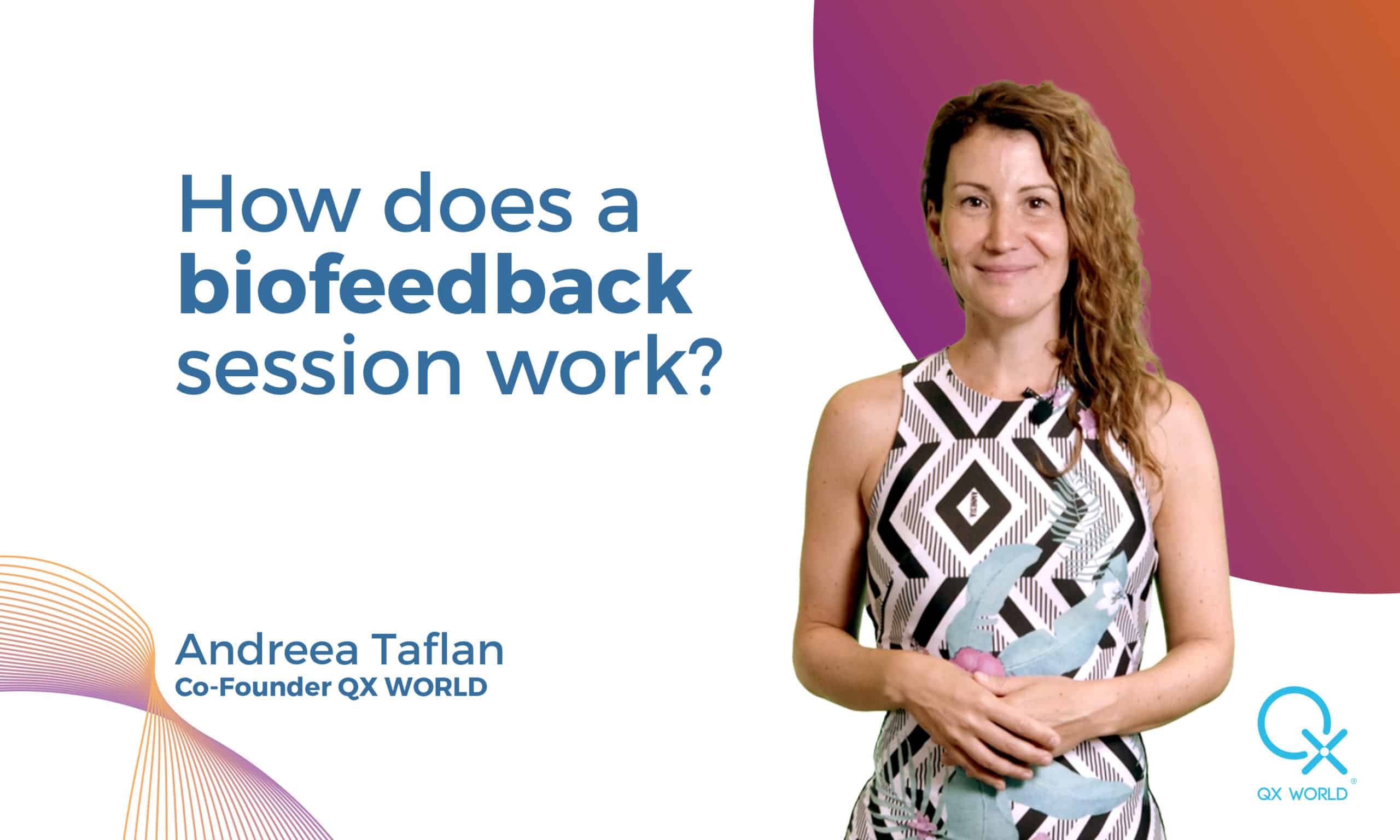
Making lifestyle changes doesn’t have to be difficult when biofeedback is involved. Let’s walk through the different stages of a biofeedback session together, and you will see that anyone can do it! Overall, there are five key steps to be expected. .
Before doing anything else, the practitioner needs to get a general idea of your current lifestyle or conscious SOC profile: your habits, routines, how much exercițiu you get, how much and how well you sleep, how many hours you work, if you drink alcohol or fum, how much water you drink, whether you take any medication, and so on.
The answers to these questions will allow the practitioner to personalize the biofeedback session for optimal results.
The next step is setting up the dispozitiv de biofeedback, also referred to as the calibration process. Usually, the device is attached to the client’s body with harnesses or electrodes. A very subtle electrical signal, so gentle că most people don’t even feel it, is then sent through a body to measure a body electric and to make sure the device has the correct settings pentru the client – as everyone’s body is unique.
In a third step, the device starts tracking possible stressors sau inconștient SOCs (Suppressions and Obstructions to Cure) by sending an electrical (and painless) stream through the body for about two to three minutes. After the calibration process, the system needs to map the stress responses. In what we call our ‘Matrix’, QX World has recorded and stored full electrical measurements of each substance through an analysis called voltammetry, resulting in so-called voltammetric signatures. Rather than simple frequencies, voltammetry captures a much more complex profile.
The device then sends you all of these rich voltammetric signatures, one at a time, and records your stress responses to them on a numeric scale from strongest to weakest, as compared to your original baseline or normal range of responses. The result is a comprehensive overview of your stress reactivity to many aspects of life.
While this is happening, all you have to do is sit back and relax.
Once the inventory of stressors or SOCs is complete, the actual biofeedback part of the session starts. While you’re still hooked to the biofeedback device, the practitioner has it run a specific software program based on the inventory of stressors created in the previous step.
Depending on your specific stressors, the program monitors your brain waves, heart rate, breathing, skin temperature, galvanic skin resistance (GSR) or muscle tension using quantum algorhythms. The information gathered is fed back to you – hence the term ‘biofeedback’ – on a monitor or, in some cases, through sound or light.
With the program running, the biofeedback therapist teaches you to make deliberate changes in your body and, by doing so, change the measurements at will. In the case of terapia cuantică de biofeedback, an advanced type of biofeedback, the devices sets out to activate the body’s self-healing capacity as well, trying to balance your body electric by sending ultra-low electrical pulses to the inconștient parts of the organism.
Most biofeedback sessions take between thirty and ninety minutes, and end with a debriefing: a report summarizing the feedback your body provided as well as containing personalized lifestyle tips important for reaching your health goals.
The number of sessions needed varies from client to client, with most achieving optimal results in fifteen to thirty sessions.
+1 (989) 681-1063
+1 (856) 322-8589